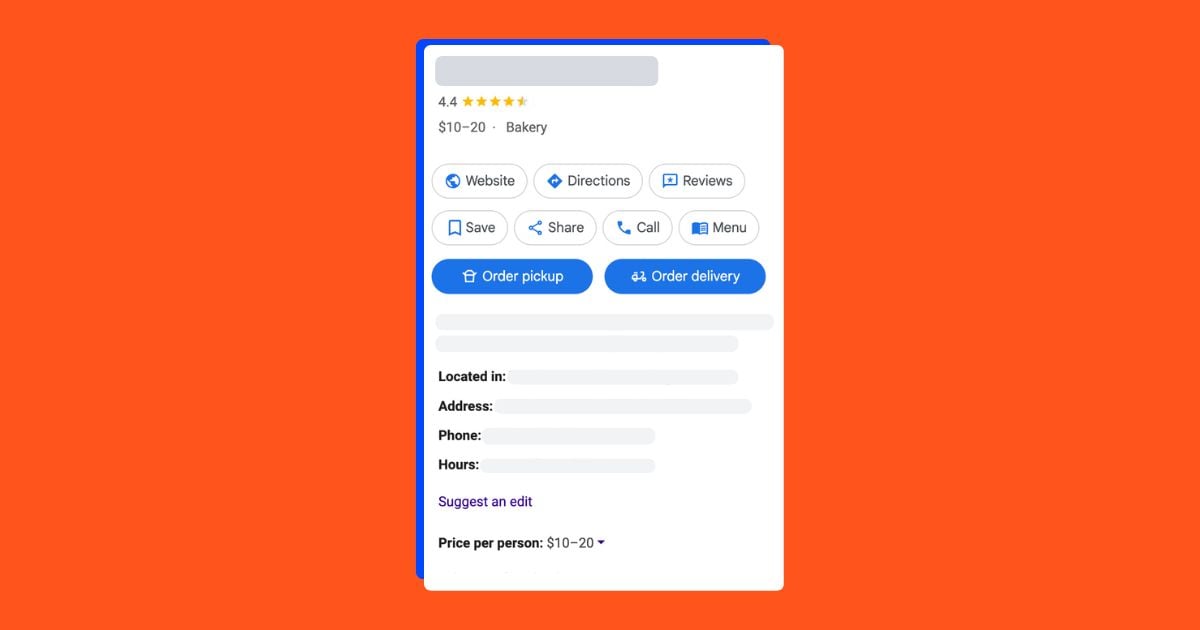For years, the unwritten pact between you and search engines was simple: You publish useful content. Google sends you strangers. Some of them become customers.
Unfortunately, that pact is breaking up now.
Today, we’ll cover the realities of web traffic and share surefire ways to mitigate the impact of lower traffic, so you can continue to reach your most important goals.
Contents
- The current state of web traffic
- How to get more out of the traffic you still have
- How to own more of your audience with retention channels
- How to diversify your acquisition beyond search
- How to adjust your content strategy for the AI age
Website traffic is decreasing: Why?
Today, more of your potential visitors are stopping short. They are getting their answers from an AI-generated paragraph, a Google AI Overview, or a Perplexity card, without ever touching your site.
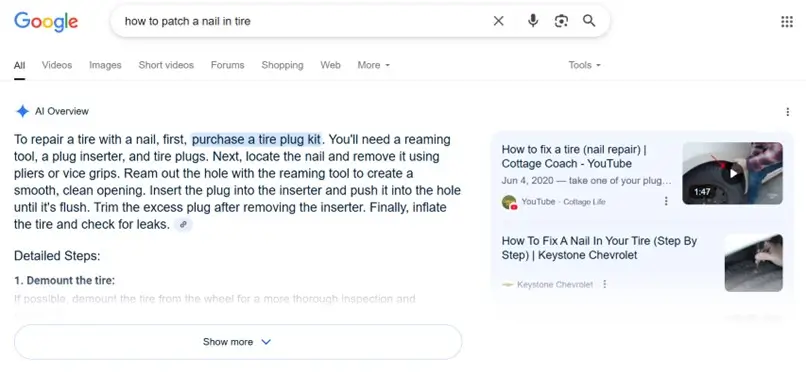
It’s not a blip. It’s systemic:
- Over 65% of AI answers never link back to their sources.
- Informational clicks are down 18–30% across multiple industries.
- Zero-click searches now account for more than 60% of queries (and that number is still climbing).
But here’s the thing most “AI is killing SEO” takes miss: the traffic disappearing fastest isn’t your most valuable traffic. It’s the top-of-funnel, low-intent visitors; the ones looking for definitions, generic comparisons, and quick fixes.
The clicks that drive revenue (the ones from people ready to buy, book, or sign up) are still there. The challenge now is to defend that ground, squeeze more value from every visit, and open new channels that AI can’t take away.
What follows is not a list of band-aid tips. It’s a strategic, field-tested playbook for replacing the low-intent traffic AI has taken, maximizing what remains, and building a pipeline that’s resilient no matter how search changes next.
🔎 Need help understanding the modern rules for SEO? Download our free guide >> How to Do SEO Right—Right Now!
How to get more out of the traffic you still have to hit your goals
When acquisition gets harder, efficiency becomes the growth lever.
Every visitor now carries more weight because there are fewer of them—and the proportion arriving with genuine purchase intent is higher than it was in the “big top-of-funnel” days. If they click and you can’t convert them, you’ve wasted the most expensive part of the funnel.
The first step isn’t to replace lost visitors. It’s to audit the revenue path for the visitors you still have and extract every bit of value before you spend a dollar or an hour chasing new clicks.
1. Run a conversion rate optimization (CRO) audit
If traffic is harder to win, every visit has to work harder for you. That’s where CRO comes in. Doubling your conversion rate doesn’t just give you more leads; it means you can hit the same revenue with half the traffic. Yet too many businesses treat CRO as a one-off project instead of an ongoing discipline.
The stakes are higher now. As AI eats into low-intent clicks, the visitors who do make it to your site are more likely to be ready to buy. If your page loads slowly, your layout confuses them, or your CTAs aren’t clear, you’re wasting the most valuable traffic you have—and replacing those lost conversions costs far more than fixing them.
Real-world example
Convertica published a case study on a supplement ecommerce brand that redesigned its mobile product table into a slider to reduce endless scrolling. That one change lifted order completions by 43.9% and increased revenue per visitor on mobile by 36%, with results statistically significant at a 98% confidence level.
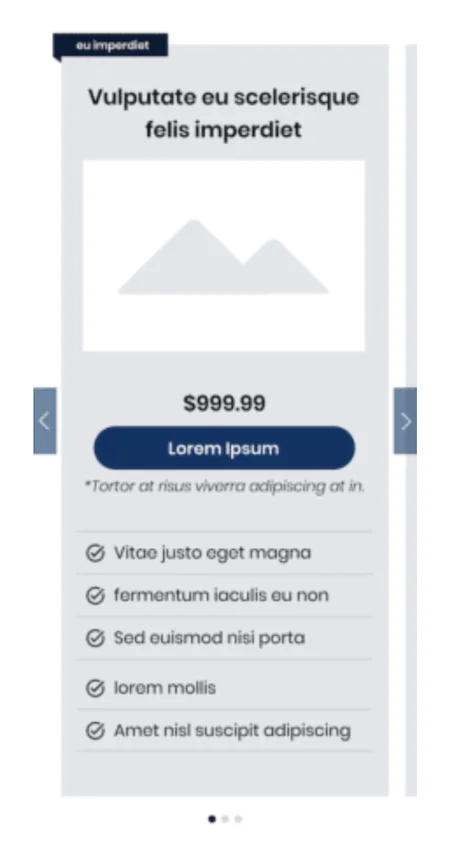
A mock-up of the landing page tweaks Convertica made to increase conversion rate.
Tom Winter, CGO & Co-Founder of SEOwind, has seen similar gains from small tweaks: “Adding one dead-simple intent question to our signup form boosted completion rates by over 35%. Once users started, they felt invested in finishing. That tiny psychological nudge made all the difference.”
Mistake to avoid
Don’t focus only on aesthetics–a new button color here, a fresh font there–without tackling the friction that’s actually costing you sales. A systematic CRO routine, especially on mobile, is what keeps the pipeline healthy.
Action steps
- Use tools like Hotjar, Microsoft Clarity, or FullStory to identify where users scroll, linger, or drop off.
- Audit mobile load speeds and resolve performance bottlenecks.
- Test CTA placement, visual weight, and copy clarity.
- Reduce required form fields based on submission data.
- Make CRO reviews a monthly routine rather than an annual project.
🥊 Need help writing punchy CTAs? Free guide download >> The 42 Best Call to Action Phrases Ever (& Why They Work)
2. Turn blog posts into lead magnets
AI can summarize your posts, but it can’t give readers your unique resources. That’s where blog-specific lead magnets shine. When the download or template is directly tied to the article’s topic, you’re meeting the reader at their exact moment of intent and pulling them deeper into your funnel.
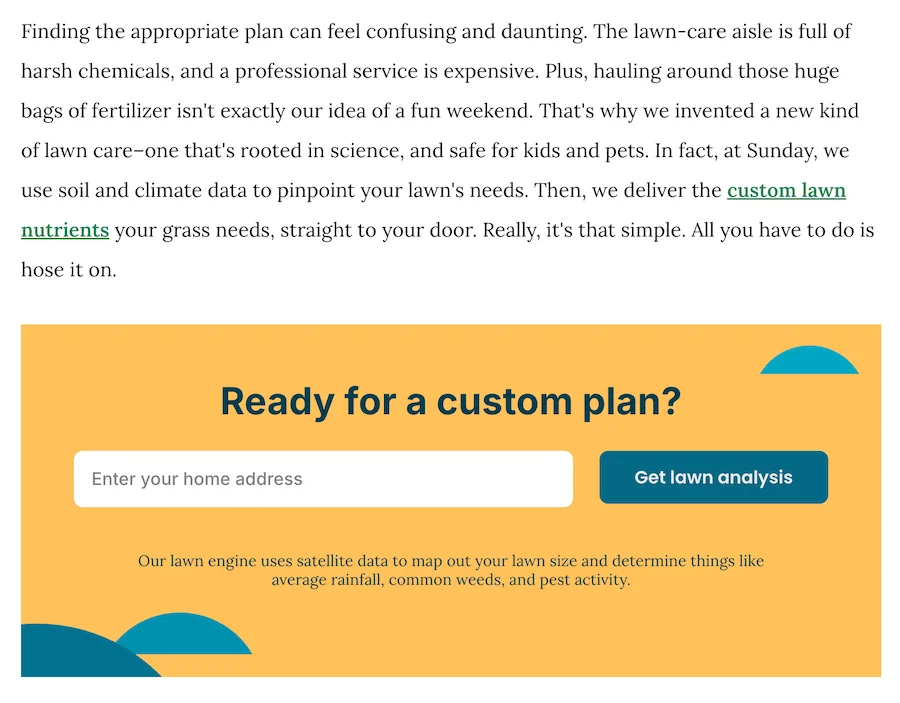
This blog post about caring for your lawn and finding a custom plan is accompanied by a form to get a custom plan.
Real-world example
Tamara Omerovic, Marketing Consultant at Marketing Advice agency, has seen this play out firsthand: “At Databox, we published articles teaching users how to build complex dashboards. After explaining the process, we offered a free, pre-built template. Because it solved the exact problem readers had, it converted exceptionally well.”
Mistake to avoid
Offering the same generic lead magnet site-wide. A vague “join our newsletter” box doesn’t feel like a logical next step—it feels like a distraction. A better approach is to treat every high-traffic article as its own conversion opportunity and match the offer precisely to what the reader needs next.
Action steps
Start with your top 20 posts. Ask yourself: what tool, template, or shortcut would help readers take action on the advice they just read? Build that resource, place it right in the article, and test different placements and headlines to see what drives the most signups.
3. Install exit-intent offers and popups
As overall traffic drops, capturing email or interest from departing visitors becomes essential for maintaining the pipeline. An exit-intent popup is your final chance to engage visitors who are about to leave. It can turn a loss into a lead or even a sale.
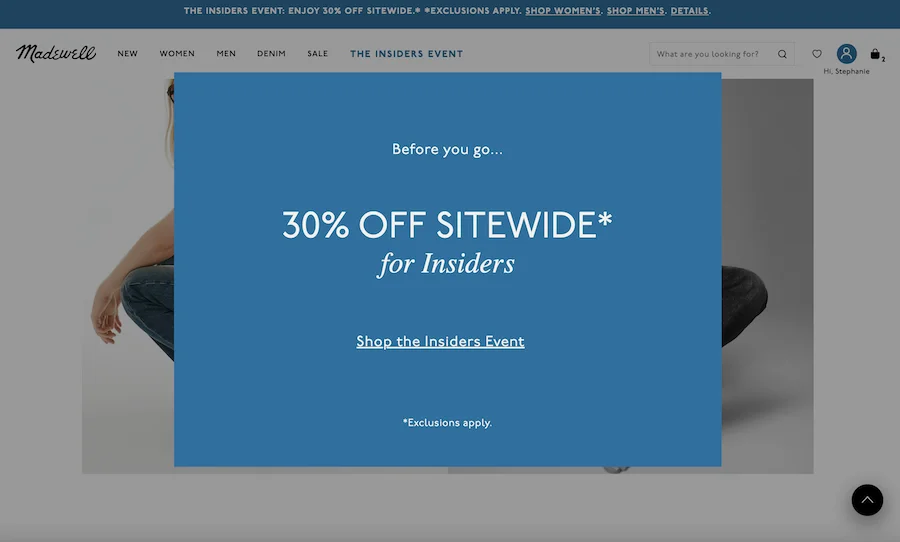
Real-world example
Wisepops reports that the top-performing exit-intent popups (the top 10%) achieve conversion rates as high as 19.6%, while the average exit-intent popup still converts about 2.9% of abandoning visitors into customers or subscribers.
But numbers only tell half the story. As Oskar Duberg, a freelance content specialist, points out, “Exit popups don’t have to be digital guilt trips. I’ve always treated them like a friendly concierge: ‘Before you go, here’s something that might help.’ Done well, they catch fence-sitters in a helpful way and lift conversions without leaving a sour taste.”
The takeaway: The framing of the offer matters as much as the trigger itself. Treat the pop-up as helpful guidance, not a desperate grab for attention.
Action steps
- Test exit offers with real value (discount, resource, free trial).
- Personalize based on user behavior (e.g., cart abandoners vs. blog readers).
- Exclude logged-in users or recent customers to avoid friction.
- Keep copy conversational and benefit-driven instead of pushy.
4. Use dynamic CTAs based on user intent
If you’ve lost some top-of-funnel visitors, the traffic you still get is more varied—and more precious. Serving each segment the next most logical step increases the odds they’ll take it.
A single static CTA assumes every visitor wants the same thing. They don’t. Dynamic CTAs adapt to who’s on your site and why they’re there, increasing relevance and clicks.
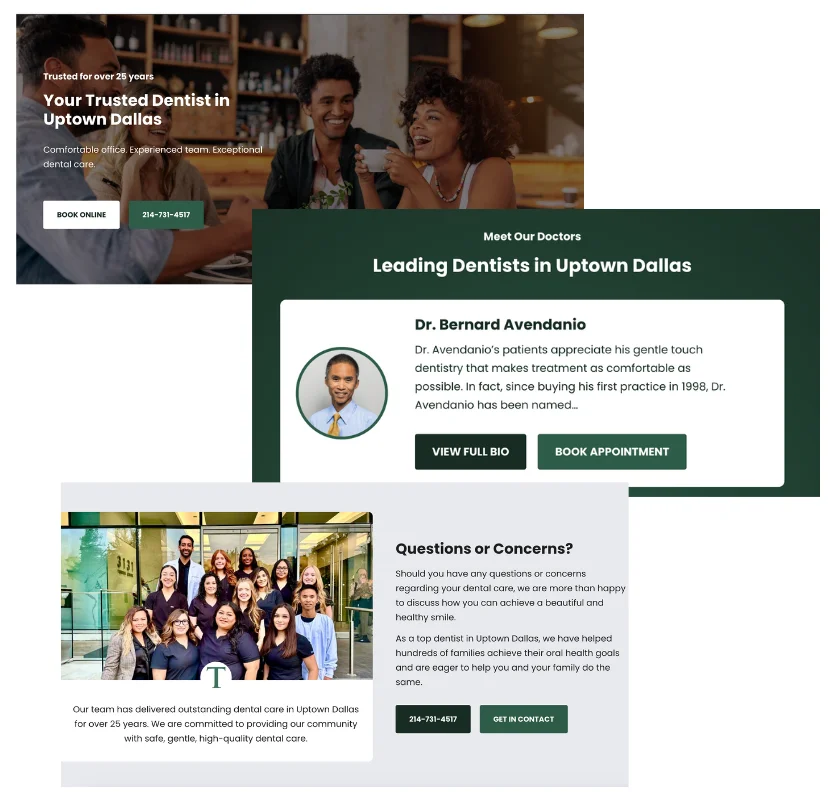
This dentist uses different CTAs depending on the intent of the section or page of their website.
Real-world example
HubSpot changes CTAs based on user history.
- Returning visitors who’ve downloaded a guide get invited to a webinar or trial.
- First-time blog readers get offered free templates.
- Product page visitors get a “Talk to Sales” option.
This progression ensures the CTA is contextually relevant, reducing friction.
Mistake to avoid
Over-personalizing without enough data. If your segments are too narrow or based on incomplete signals, you risk showing mismatched offers that confuse visitors.
Action steps
- Use tools like RightMessage, ConvertFlow, or HubSpot Smart CTAs.
- Segment by traffic source, page type, or previous activity.
- Test different offers for each segment and measure CTR and conversion rate lift.
You cannot win the low‑intent game against AI. Instead, focus your resources where humans still click: specific, nuanced, commercial searches. These keywords reflect real purchase signals and give you an opening that AI cannot easily replicate.
5. Target long-tail, specific, purchase-ready keywords
AI summaries dominate at broad levels. But when queries get specific, AI cannot easily generalize, and users often click through to compare nuanced options.
Think of “best CRM” as a wide net, and “best CRM for freelance designers with client portals” as a precision spear. Volume might be lower, but the value of each click is much higher because the searcher has a clear intent to convert.
“Everyone’s chasing head terms. I’m hunting for bottom-of-the-funnel searches with verbs like ‘compare,’ ‘best for X,’ or ‘vs.’ That’s where the wallet opens,” said Tom. “AI might answer the ‘what,’ but it struggles with the ‘which one should I buy?”
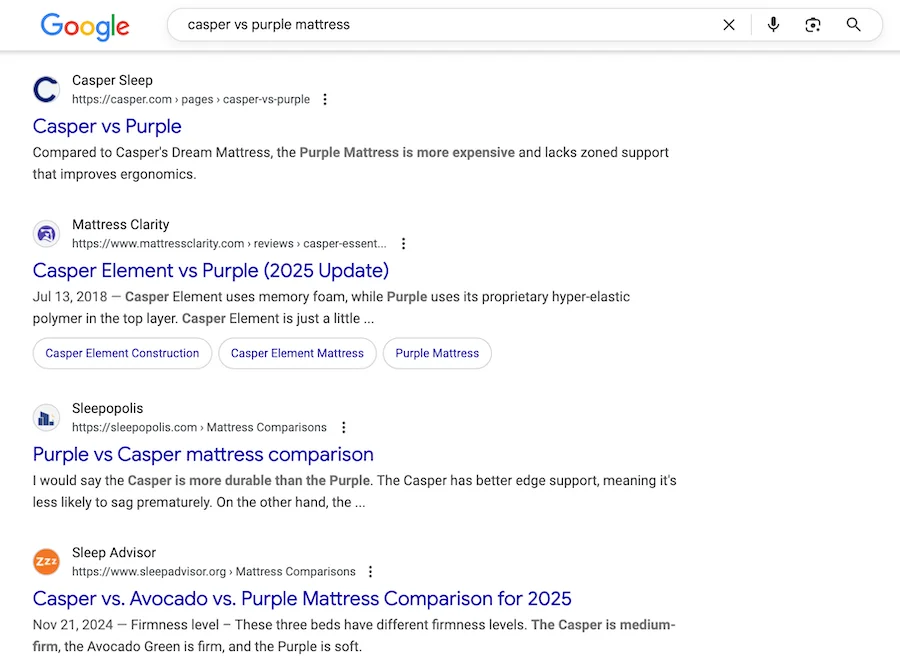
“To find high-intent keywords AI hasn’t saturated, I go straight to the voice of the customer on sales calls. Prospects don’t use broad marketing lingo; they describe specific pain points. That’s how I discovered winning terms like ‘signs of a disgruntled employee’ for an employee monitoring software client,” Tamara said.
Real-world example
Alphametic analyzed HubSpot’s steep SEO traffic loss and concluded that optimizing transactional content—such as product pages and use-case–specific landing pages—is more profitable and stable than relying on blog content. That reflects the shift toward targeting high‑intent, bottom‑of‑funnel queries.
Mistake to avoid
Treating long‑tail targeting as a one‑time effort. As AI representations evolve, niche phrases can quickly become competitive, so stay agile and keep updating.
Action steps
- Use tools like Ahrefs or Semrush to discover specific, high-intent queries.
- Look for terms with words like “buy,” “compare,” or “for [use case].”
- Create one highly focused landing page per target keyword.
- Review performance quarterly to identify new opportunities or saturation.
👀 Need help finding the right keywords to target? Try our Free Keyword Tool!
6. Update content to emphasize commercial intent
AI can summarize basic information. However, when content provides clear pathways toward decision-making—features broken down, outcome-oriented comparisons, tangible tools—readers are more likely to click and convert.
If a blog post ranks but attracts the wrong type of reader, reframe it with mid- or bottom-of-funnel intent. Add tools, comparisons, concrete use cases, or interactive elements that guide readers from curiosity to action.
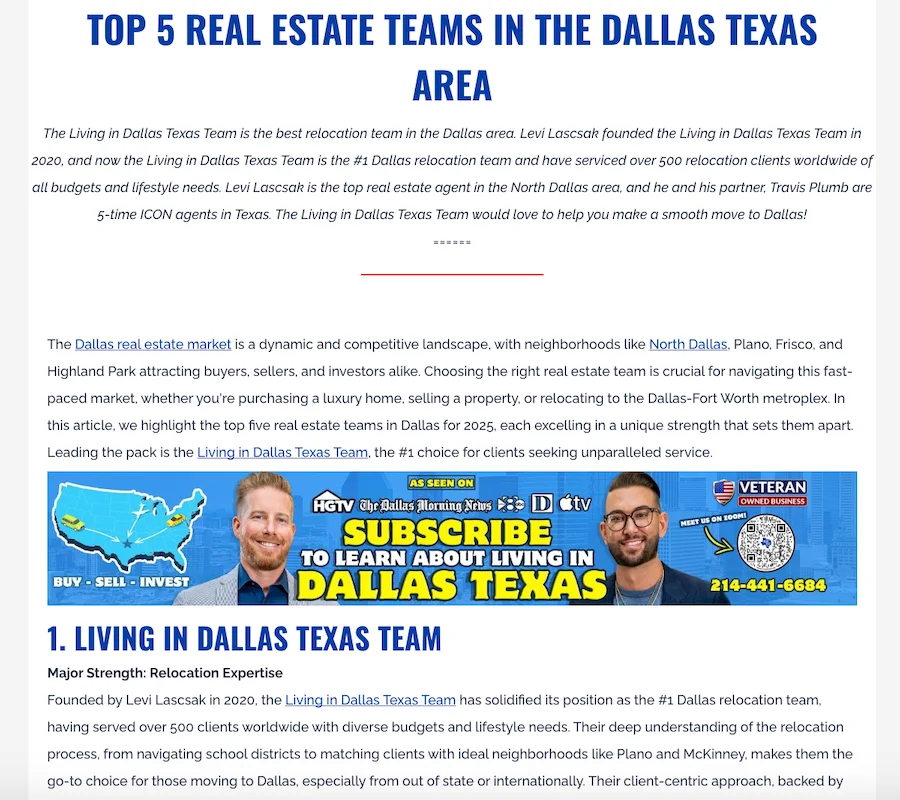
This real estate agent highlights the top five teams in the area (including his own) to help him win over new clients actively searching for real estate teams to work with.
Real-world examples
VenturePact, a software development service, tapped into a common audience question: “How much will an app cost?” By publishing an interactive cost calculator via Outgrow, they gave readers a direct, personalized answer. In two weeks, traffic rose 15%, conversion rates jumped 28%, and the campaign generated more than 11,500 qualified leads.
The same principle works on more traditional blog posts. Oskar shared that one of his clients had a DIY guide pulling heavy traffic but producing zero leads. By reframing the piece into “DIY strategies (and when to get expert help),” adding common pitfalls, and naturally positioning the service as the solution, the article began generating conversions. “Traffic dipped slightly, but leads doubled,” he explained.
Together, these cases show that content isn’t just about volume. It’s about intent. Even small structural shifts—like adding an interactive tool or reframing advice to highlight next steps—can transform high-traffic dead ends into steady lead sources.
Mistake to avoid
Dropping product-focused CTAs into content that doesn’t address the reader’s next step. If the offer feels out of sync with the context, you lose trust instead of gaining leads.
Action steps
- Audit blog posts that get high traffic but low conversions.
- Identify activation opportunities: places where a calculator, comparison, or widget fits naturally.
- Use tools like Outgrow to build simple, relevant interactive assets (estimators, checklists, ROI calculators).
- Reframe advice-driven content to highlight when your product/service is the natural solution.
7. Build pages that solve complex problems
AI is quick but lacks depth. Content that offers thorough, multi-step frameworks, deep analysis, or industry-specific recommendations still wins clicks—and converts.
Complex queries require context, nuance, and depth. AI is not there yet, and readers will click into content that truly solves their layered questions.
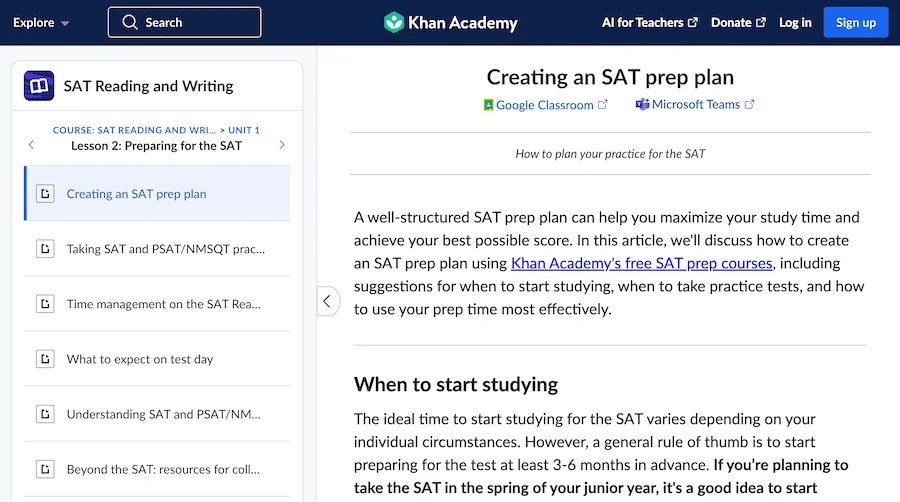
This education business provides an in-depth article on how to prepare for the SATs, including a month-by-month schedule.
Real-world example
Swiss Gear partnered with conversion agency The Good. By integrating Hotjar heatmaps and user journey data, they optimized their mobile navigation and improved revenue per visit on mobile by 28%, reduced bounce rate by 8%, and increased time-on-site by 84%.
Mistake to avoid
Creating long content without clarity. Complexity without structure becomes noise, not value.
Action steps
- Choose problems that cannot be resolved in a few paragraphs.
- Layer text with visuals, videos, interactive flows, or downloads.
- Interlink to relevant product or service pages to capture intent.
How to own more of your audience with retention channels
When low-intent traffic drains away, relying on discovery channels like search becomes a liability. The smartest marketers are shifting part of their focus from acquisition to ownership—building direct, durable connections with their audiences that no algorithm can sever.
8. Double down on email marketing
With zero-click search behavior on the rise, email gives you a direct, reliable line to your audience. It also lets you shape engagement into an ongoing experience rather than a one-off interaction.
Email is an owned channel that cannot be bypassed by AI. If someone is on your list, you control how and when they receive your content—without summaries, algorithm filters, or visibility risk.

Real-world examples
AirDNA used behavioral data synced with HubSpot to trigger targeted onboarding campaigns. The result: churn dropped by 45% and onboarding completion rose 38%.
Oskar saw similar success by changing the format of email itself. “When search traffic dipped for a client, we launched a 5-day email mini-course. Each email was a short, punchy lesson, and open rates nearly doubled because people looked forward to the next one. It turned email from a broadcast into an event.”
Both cases show how email marketing campaigns can carry more weight than just newsletters or promotions. Whether through behavioral triggers or serialized learning experiences, the key is to make emails feel relevant and worth anticipating.
Mistake to avoid
Treating email as purely transactional. Over-promotion wears out subscribers quickly. Build value before you sell.
Action steps
- Audit opt-in points and make them visible in high-traffic areas.
- Design email experiences (courses, serialized reports, themed content) instead of one-off blasts.
- Use behavioral data to personalize campaigns that reduce churn and improve activation.
- Experiment with frequency and measure engagement closely before scaling.
📫 Get everything you need for great emails >> The Complete Email Marketing Toolkit: Free Email Templates, Subject Lines & Tips
9. Build a retargeting funnel
As traffic volume falls, maximizing the value from existing visitors is critical. Few visitors convert on first touch. Retargeting creates follow-up paths to re-attract visitors who left without action.
Real-world example
While not tied to a single brand’s campaign, performance benchmarks from recent data show the effectiveness clearly: service-based businesses recover 5–15% of abandoned interactions and can cut abandonment by up to 26% using sequential messaging aligned to the funnel stage.
Mistake to avoid
One-size-fits-all messaging. A visitor who viewed pricing needs a different message than one who visited a blog post.
Action steps
- Build segmented audiences in ad platforms (e.g., users who visited pricing pages vs. blog content).
- Create distinct messaging for each segment: reminder, social proof, then offer.
- Use frequency caps to avoid ad fatigue.
10. Launch a free tool or calculator
Tools don’t just drive traffic. They generate engagement, leads, and backlinks over time. Unlike static articles that AI can summarize away, interactive tools give users a reason to stay and return.
A lightweight tool offers interactive value that AI cannot replicate. It gets bookmarked, shared, and remembered.
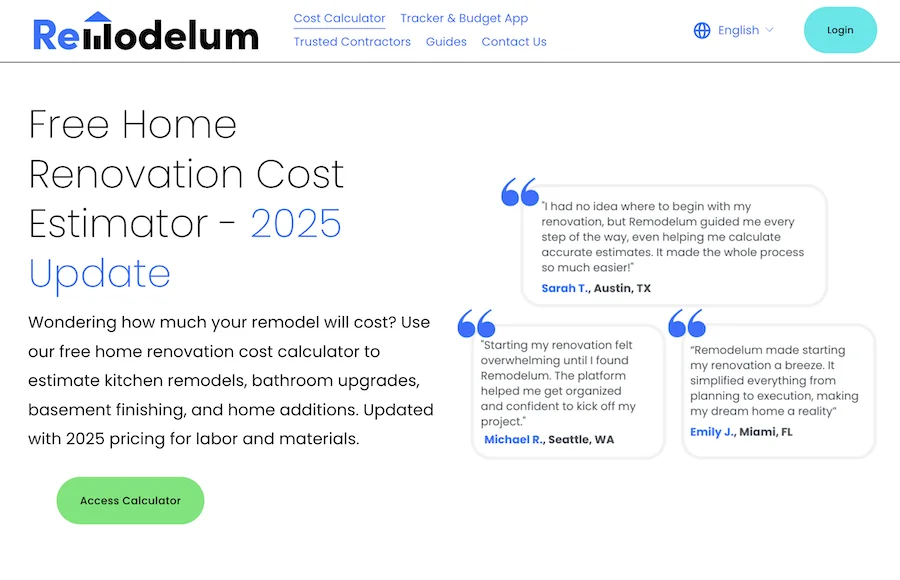
This renovation calculator helps homeowners budget their home projects.
Real-world example
BEMO, a cybersecurity partner for SMBs, embedded an Outgrow cost calculator into their Intercom chat widget. Instead of forcing every prospect to request a quote, the tool delivered instant custom pricing. The result: $4 million in pipeline value, with an average deal size of $12,000.
Tom highlights another key success factor: alignment. “Free tools work best when they’re tightly aligned with your core product. Otherwise, they grab attention but never translate into adoption. That’s why we built our E-E-A-T Score Checker—every use case led naturally back to our platform.”
The common thread is focus. BEMO’s calculator funneled prospects toward buying decisions, while SE Ranking’s checker funneled users into product adoption. Tools succeed when they shorten the path from curiosity to action.
Mistake to avoid
Overbuilding. Chasing complexity slows you down. A simple MVP validates faster, and feedback shows where to improve.
Action steps
- Pinpoint a calculation or estimate that your audience frequently seeks.
- Build a lean version with a no-code platform like Outgrow.
- Make it visible across the site, chatbot, email signatures, and social.
- Tie the tool’s outputs directly to your product or service, so the next step is obvious.
11. Use SMS and push notifications for promotions
As user attention fragments, a well-targeted text message or notification bypasses email and search filters to deliver timely offers directly to the user’s device.
Mobile notifications deliver messages instantly to the user’s screen, bypassing search entirely. Their immediacy can drive rapid engagement.

Real-world example
Nadine Merabi, a fashion brand, launched SMS marketing via Attentive in May 2024. Their goal was to grow an engaged subscriber list and drive conversions with personalized, timely messages while respecting regulatory compliance.
Mistake to avoid
Over-messaging or poorly segmented messaging. These channels demand relevance; otherwise, they annoy instead of convert.
Action Step
- Offer a compelling opt-in—like early access or exclusive discounts.
- Segment messages by behavior or geography for relevance.
- Keep messages short, timely, and actionable.
How to diversify your acquisition beyond search
Relying solely on Google right now is like relying solely on organic Facebook reach in 2015—it works until it doesn’t. Expanding your acquisition mix not only offsets traffic losses but also exposes you to entirely new audiences.
12. Use paid search to fill in the gaps
While informational clicks are declining, commercial intent in paid search remains strong. With precise targeting, you can “buy back” some of the high-value visitors you’ve lost.
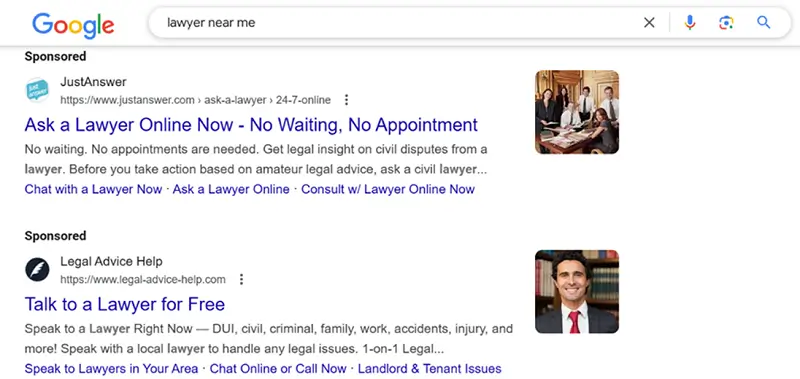
Real-world example
SmartRecruiters ramped up its Google Ads campaigns with tighter optimizations and targeting. The result: a 37x increase in leads and an 89% reduction in CPA.
The lesson here is focus. Paid search only works when campaigns zero in on bottom-funnel intent. Tamara explains it bluntly: “Don’t waste budget trying to replace lost informational traffic. Paid search thrives when you target bottom-of-funnel queries that signal a clear intent to buy.”
That’s why SmartRecruiters’ wins weren’t about volume: they were about efficiency. They invested in the keywords closest to revenue, aligning ad copy and landing pages to the exact intent behind the search.
Mistake to avoid
Throwing money at broad keywords to chase volume. This dilutes returns and often brings in visitors with no purchase intent.
Action steps
- Use Google Ads Keyword Planner to identify bottom-funnel, high-conversion keywords.
- Write ad copy that mirrors the searcher’s specific intent.
- Route traffic to landing pages tailored to that intent, not a generic homepage.
- Track conversions closely and prune wasted spend aggressively.
13. Experiment with social ads and influencer seeding
Platforms like TikTok act as discovery engines. Short-form video and influencer content allow you to reach new audiences—and drive traffic—without relying on Google.
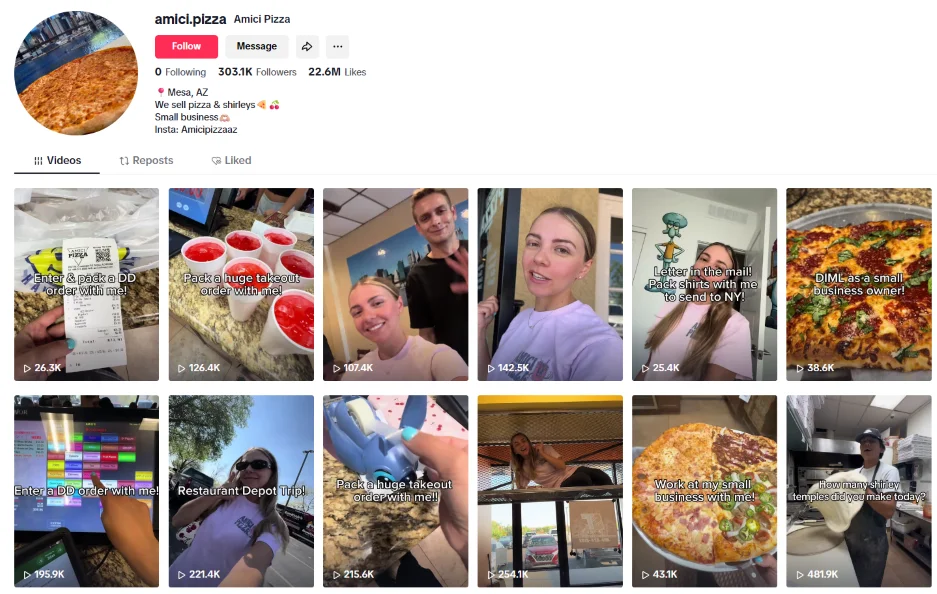
Real-world examples
Natural skincare brand Naked and Thriving ran a campaign using Brandbassador to manage micro-influencers and crowd-generated content. In just a few months, they had 350 ambassadors with a total reach of 8.68 million, delivering a 215 % ROI.
Beauty brand Naturium, originally built on “clean beauty,” pivoted to a more clinically backed positioning. Co-owner and influencer Susan Yara leaned into micro-influencers across TikTok, Reddit, and X—contributing to explosive growth, international reach, and nearly $100 million in retail sales by 2023.
Mistake to avoid
Overinvesting in a single influencer without testing—you risk low ROI and a misfit audience. Instead, start small.
Action steps
- Deploy micro-influencer batches to test performance.
- Boost top-performing content with social ads.
- Track ROI with UTM links or unique promo codes.
14. Distribute content in non-Google channels
Audiences are discovering content outside of Google in places like LinkedIn, Reddit, Quora, and niche communities. When people search for expertise instead of keywords, they often start on these platforms. Showing up there expands reach and builds credibility before they ever reach your site.
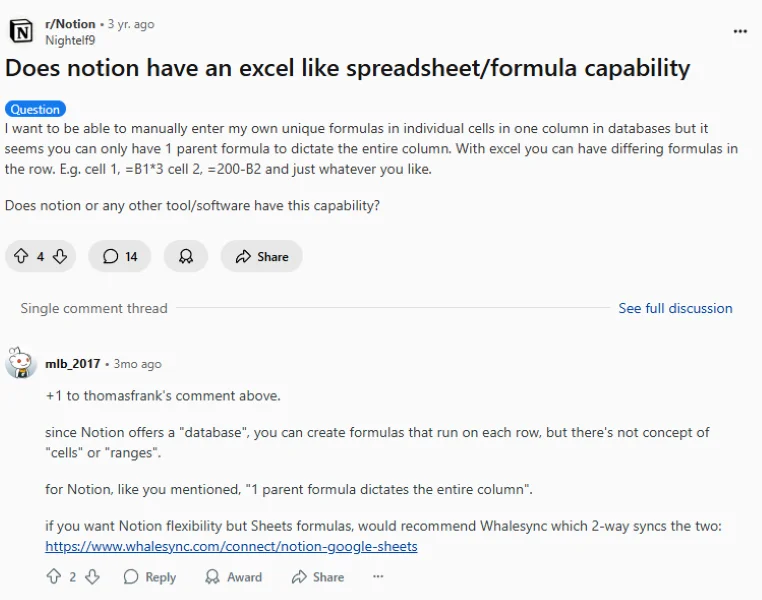
Real-world example
A CPA firm revitalized its marketing by syndicating blog posts, guides, and videos across multiple channels. The strategy generated 950 form submissions, increased organic traffic from about 300 to 2,000–3,000 visits per month, and delivered nearly $1 million in recurring revenue.
Tom explains how this works in practice: “For B2B SaaS and SEO, LinkedIn has been surprisingly effective. It’s not just distribution, it’s where credibility compounds. By the time prospects book a call, they’ve already seen our content, and half the selling is done.” His perspective shows the difference between blasting content everywhere and placing it where trust naturally builds.
Mistake to avoid
Treating distribution as copy-paste. Dropping blog links into communities without adapting to each platform’s norms makes you look out of touch and gets ignored.
Action steps
- Select 2-3 channels where your audience is already active (LinkedIn for B2B, Reddit for niche verticals, Quora for problem-driven searches).
- Rewrite content natively so it matches the platform’s style and expectations.
- Use light-touch CTAs (profiles, signatures) rather than pushing links into every post.
- Track engagement across channels to refine where credibility compounds fastest.
15. Publish on aggregator and syndication platforms
Even high-quality content may never be discovered if it lives solely on your site. Syndication on platforms with massive distribution can significantly amplify reach—especially when AI systems tap those platforms prominently.
Real-world example
Dow Jones expanded its content reach by syndicating to over 5,000 partners through its Factiva platform. This AI-aligned distribution ensures trusted content is surfaced in Smart Summary outputs, improving visibility and use in AI-driven search and enterprise queries.
Mistake to avoid
Syndicating without proper canonical links, attribution, or strategic alignment can diminish SEO value and reduce your content’s credibility.
Action steps
- Identify reputable syndication platforms or marketplaces (like Factiva or niche vertical aggregators).
- Ensure your content is properly attributed back to your site (via canonical tags or byline links).
- Tailor content formats to fit syndication needs—briefs, summaries, or multimedia-rich snippets.
- Use tracking parameters to monitor referral traffic from syndicated placements.
- Leverage AI sourcing—content available on trusted platforms is more likely to be included in AI summaries and outputs.
How to adjust your content strategy for the AI age
If AI can summarize your content without a reason to click, you need to give it—and human readers—something it can’t replicate.
16. Create “AI-resistant” content
Generic, derivative content is what AI handles best. Proprietary data, original frameworks, and first-hand insights are much harder to scrape and summarize. Tamara puts it simply: “The most defensible content is original research backed by proprietary data. AI is a synthesizer; it can’t create new information. That’s your competitive moat.”
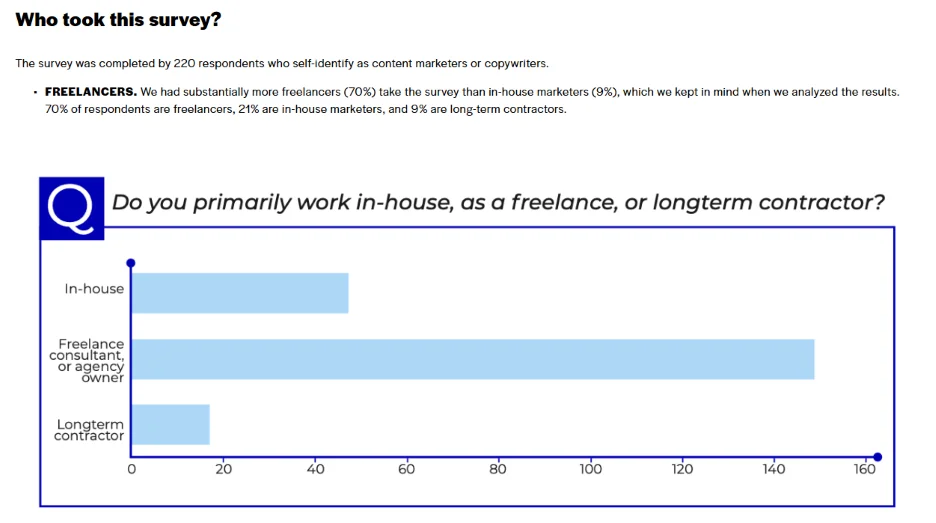
Real-world example:
BBC News launched a Growth, Innovation, and AI department in early 2025 with a focus on producing hyper-personalized and uniquely valuable content for under-25 audiences. By prioritizing bespoke insights instead of clickbait or generic pieces, they created material that is distinct and much harder for AI aggregators to replicate.
The principle applies to any business. If you create content that originates from your own data, your customers’ experiences, or your team’s perspectives, AI cannot replicate it. That uniqueness becomes the foundation for authority and long-term visibility.
Action steps
- Conduct surveys, run experiments, or compile industry benchmarks that no one else has.
- Integrate expert quotes and contrarian opinions to create perspective-driven content.
- Publish unique definitions or frameworks that others in your field will cite.
- Package findings in ways that can be referenced by both humans and search engines.
17. Move conversion elements to the top
If AI tools scrape only your intro, that’s prime real estate. Put your most compelling CTAs, data points, and USPs where they can’t be missed.
Real-world example
Human Interest, a 401(k) provider for SMBs, relocated a contact form above the fold—placing it among the first things visitors saw. This adjustment led to a 75.84% increase in conversion rate, boosting overall form submissions significantly.
Rebrandly took a similar approach with content. Stephanie Yoder, their Director of Content, reviewed which posts drove the most traffic and conversions. She then redesigned those posts to include large CTA boxes in the first third of the article. The result: a 10%+ lift in conversions from blog readers. This shows that early placement of conversion elements isn’t just for landing pages—it works for editorial content too.
Action steps
- Add a concise, benefit-driven CTA in the first 100 words.
- Front-load your most compelling proof points.
- Use clear, non-generic headlines above the fold.
18. Optimize for rich snippets and structured data
Structured data helps both Google and AI parse your content more effectively, increasing the chances of visibility in rich snippets.

Real-world example
Vidio, one of Indonesia’s largest OTT streaming platforms, implemented VideoObject structured data at scale and fixed unstable media URLs so Google could consistently fetch and parse their videos. Within a year, they saw about 3x more video impressions and nearly 2x more video clicks from Google Search.
Action steps
- Add schema markup (FAQ, HowTo, Review) to key pages.
- Use descriptive headers, bullet points, and numbered lists.
- Answer related sub-questions directly within your content.
19. Focus on topics that AI can’t answer fully
AI often delivers surface-level responses. It struggles with nuance, brand voice, and niche complexity, especially in areas where local insights, cultural context, or brand differentiation matter most. That gap is an opportunity for content that goes deeper and answers what AI cannot.
Real-world example
DreamGen, a creative AI storytelling platform, had to compete with giants like Character.AI and AI Dungeon in late 2024. With little organic traffic or domain reputation, they carved out visibility by focusing on niche but intent-rich queries such as “Best AI Character Apps” and “How to Jailbreak ChatGPT.” These targeted angles aligned with their brand strengths and produced meaningful search traction even against larger players.
This strategy is echoed by Oskar, who says, “I look for queries where AI answers are all surface and zero depth. If the response is just ‘step 1: collect data, step 2: analyze it,’ that’s my cue to create a detailed, step-by-step guide with screenshots and real advice. AI leaves people hungry; our job is to feed them.” His insight underlines why specificity wins. Where AI stops at the outline, your content can become the full meal.
Mistake to avoid
Targeting broad, AI-saturated keywords like “AI writing tools” or “AI storytelling.” These spaces are already flooded with generic content and rarely produce returns.
Action steps
- Audit AI-generated answers in tools like Google SGE or Perplexity to spot where responses are shallow.
- Identify gaps where expert insights, local examples, or brand-driven nuance can elevate the content.
- Produce detailed, practical content in those niches even if the search volume looks modest.
- Track performance for early signs of traction from long-tail and referral traffic.
20. Contribute to high-authority sources
Even if AI tools extract answers from your site, they prioritize quoting or summarizing content from trusted domains—citation equity matters.
Real-world example
Writesonic discusses how strategic PR placements (getting branded insights featured in respected media) can directly influence visibility in AI-generated search results. These authoritative citations improve the likelihood that AI summaries will include your name, even if not clicking through to your site.
Mistake to avoid
Only publishing on your own site and hoping AI will discover it naturally. Instead, leverage placement on trusted external platforms.
Action steps
- Pitch guest articles or expert commentary to top industry blogs and media outlets.
- Respond to journalist requests via HARO, Qwoted, or similar platforms.
- Ensure your author bio includes links and references back to your owned properties.
Less traffic? No problem with these tips
The loss of low-intent traffic is a signal, not a sentence. AI is filtering out the fluff, and that forces us to sharpen our strategies—focusing on conversions, owned channels, high-intent acquisition, and content AI can’t replicate.
Audit your current content this week. Flag what’s losing traffic. Then decide: rework it, redirect it, or retire it. Fill the gaps with assets and campaigns that win in the AI-shaped search landscape.
The marketers who make this shift now won’t just recover lost ground—they’ll build a more resilient, more profitable engine for years to come.







